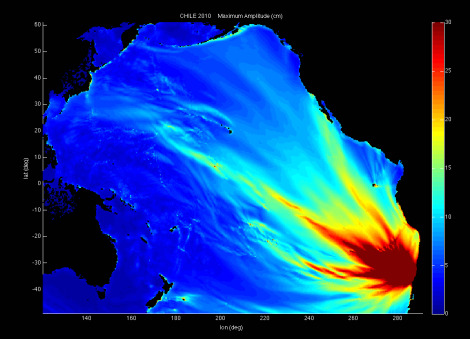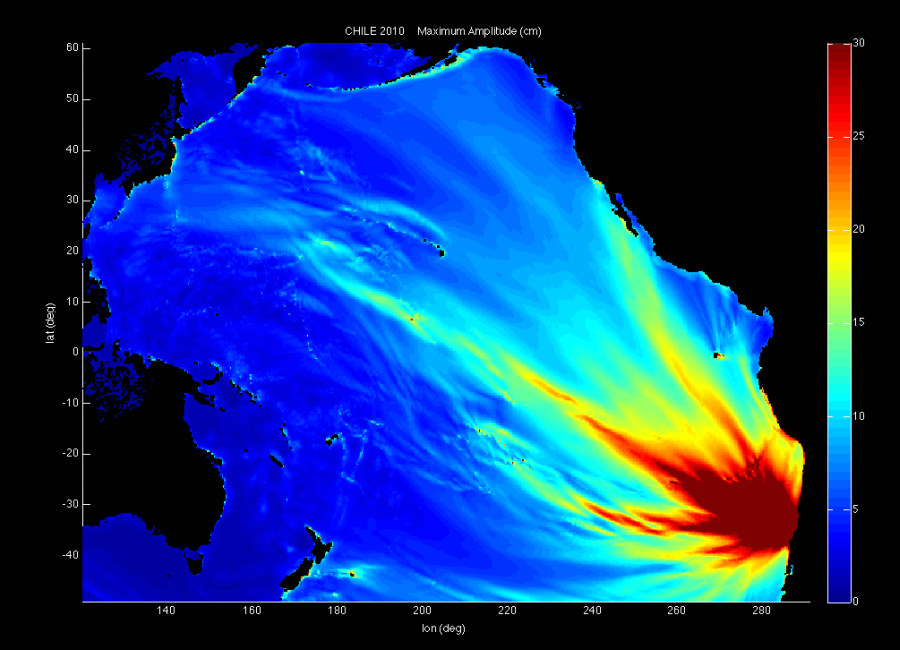Tsunami Advisory Announced
Chilean Earthquake May Send Waves to Coast

[Source: NOAA National Weather Service released February 27, 7:02am]
Tsunami advisory in effect for Coastal areas of California from Mexico to the Oregon border. 8.8 Earthquake in Chile at 22:34 PST, February 26. Significant widespread inundation is NOT expected for areas in an advisory; estimated times of initial wave arrival 12:31pm

Persons in tsunami advisory areas should move out of the water, off the beach and out of harbors and marinas.
Tsunami advisories mean that a tsunami capable of producing strong currents or waves dangerous to persons in or very near water is imminent of expected.
There is also a Flash Flood Watch currently in effect, due to the high rains. No reported flooding at this time.



